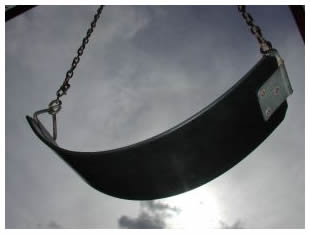 While the symptoms of PMS are very familiar to many women, those who have a history of anxiety and depression or who currently suffer from anxiety and depression may notice that the changing hormonal levels during the month bring about increased emotional problems.
While the symptoms of PMS are very familiar to many women, those who have a history of anxiety and depression or who currently suffer from anxiety and depression may notice that the changing hormonal levels during the month bring about increased emotional problems.
The week before menstruation is well-known by women and feared by men as being the most emotionally difficult week of the month. That makes for twelve to thirteen “difficult” weeks per year for women of childbearing age.
However, the ebb and flow of hormones that bring about these changes can have quite a dramatic effect of the health of women already suffering from anxiety and depression. That week can lead to feelings of increased anxiety, feelings of overwhelming sadness, abandonment issues, irritability, nightmares, physical unco-ordination, panic attacks and depression.
However, there is a second phase of the menstrual period that can also bring about weeping spells, increased anxiety, nightmares and depressive thoughts. This second bout of emotional instability generally commences about three days after the start of menstruation and typically lasts about three to four days.
Women who suffer from pre-existing anxiety and depression are especially prone to hormone-induced mood swings, yet many are not familiar with this second phase which occurs while they are actually menstruating. In fact, some women may not suffer too badly during the typical PMS period, only to find that they “go off” once the period is well under way.
What is occurring in this case is similar to what occurs to new mothers around three days after delivery. The famous “3-day blues” is caused by the sudden drop in progesterone after birth. The side-effects include uncontrolled weeping, tense mood, and nervousness. The new mother’s body is reacting this way because it is trying to adjust to the rapid change in the hormonal regime her body has grown used to in the preceding months.
Similarly, once the menstrual period commences, progesterone levels also dramatically fall, albeit to a lesser extent than that which occurs after pregnancy. Nevertheless, women may also experience a mini “3-day blues” of their own each month. Knowing that this can occur can help depressed and anxious women make sense of their symptoms. Knowledge may be enough to be able to ride through this difficult time, knowing that they are not “going mad.” The fact that this particular type of mood swing does not necessarily create symptoms every month can also be confusing to women, making them wonder just what is wrong with them.
Supplementation with natural progesterone cream can help during the lead-up to menstruation when progesterone levels are too low, thus bringing on PMS symptoms. Similarly, natural progesterone cream can also be useful in counteracting the drop in progesterone that occurs just after menstruation commences.
Natural progesterone cream is not the same as chemically-manufactured progesterone, which, strictly speaking is not progesterone at all, but rather progestin. The latter drug will not produce the desired effect against the emotional symptoms caused by hormonal swings.
Contact Beth McHugh for further assistance regarding this issue.
Related articles:
Depression: Symptoms and Treatment (1)
Depression: Symptoms and Treatment (2)
What is the best treatment for depression?
Feeling bad about taking antidepressants?
When antidepressants aren’t the best option (1)
When antidepressants aren’t the best option (3)
When antidepressants aren’t the best option (2)
Chocolate may make your depression worse!
Depression, antidepressants and sex
Depression: The myth of “Chemical Imbalance”

